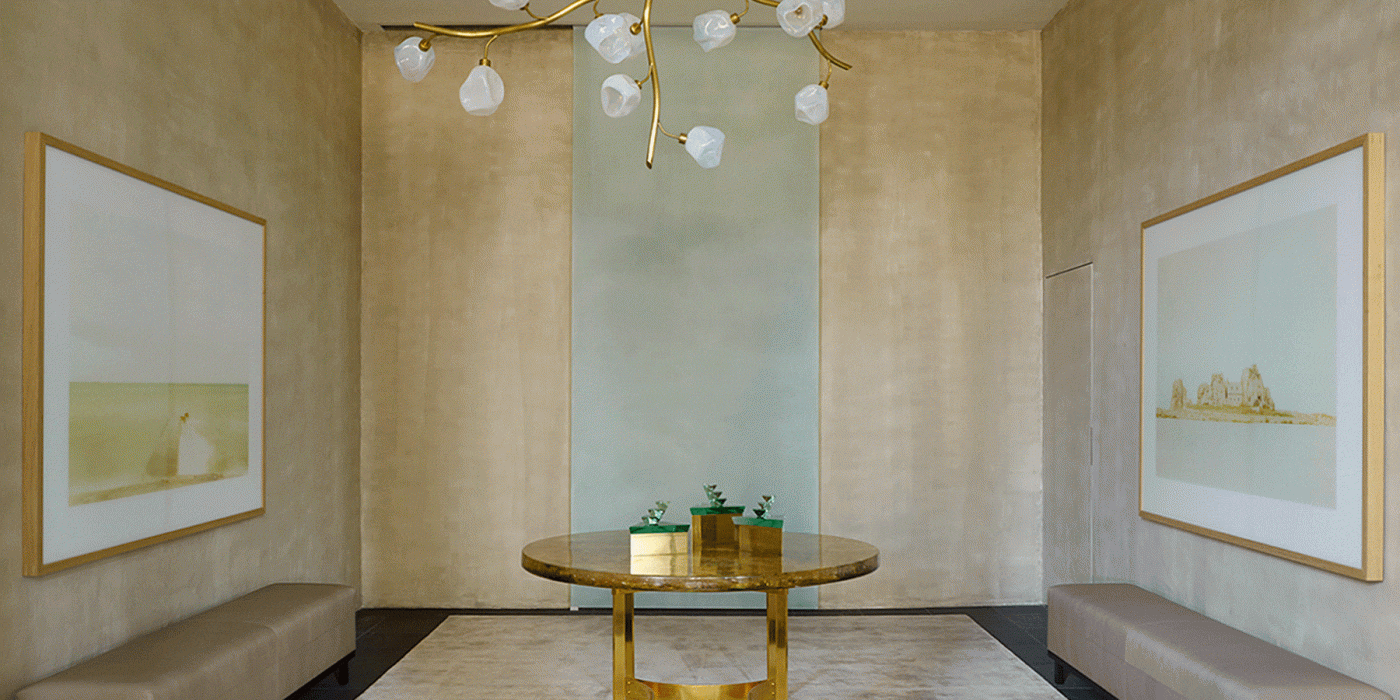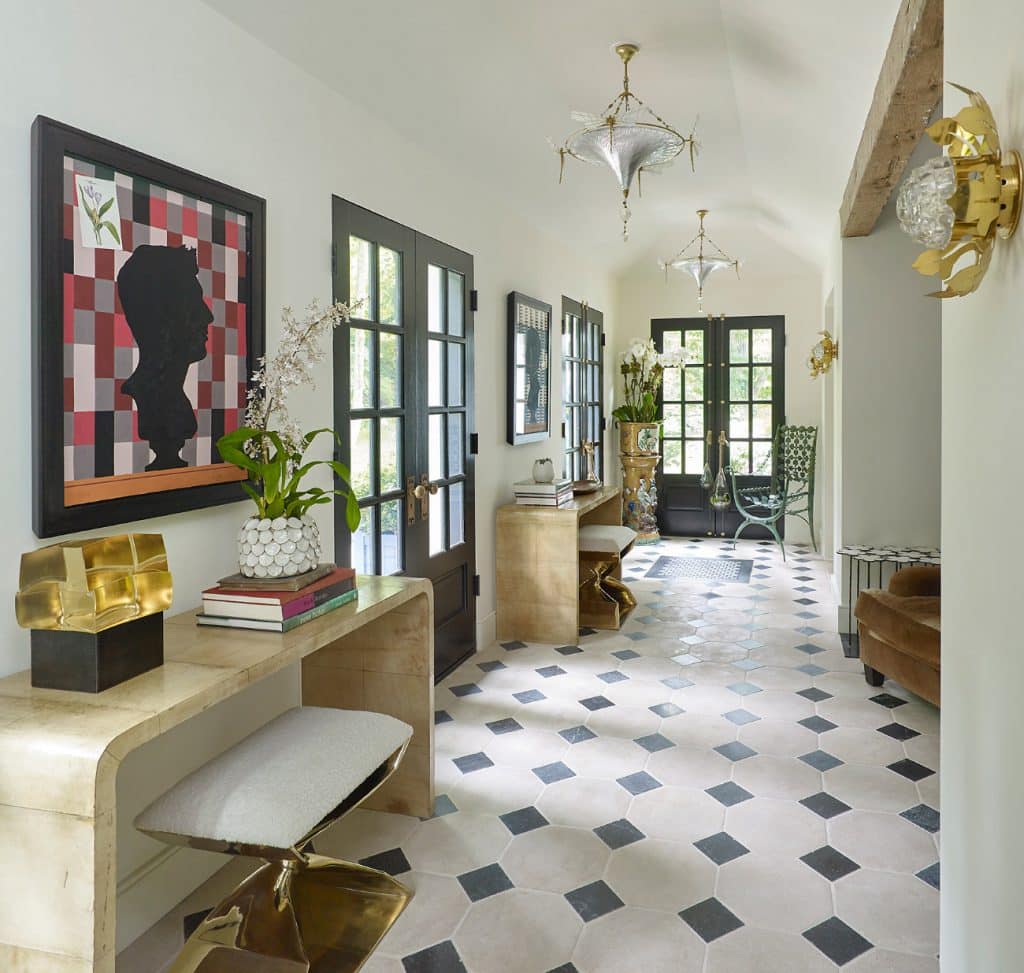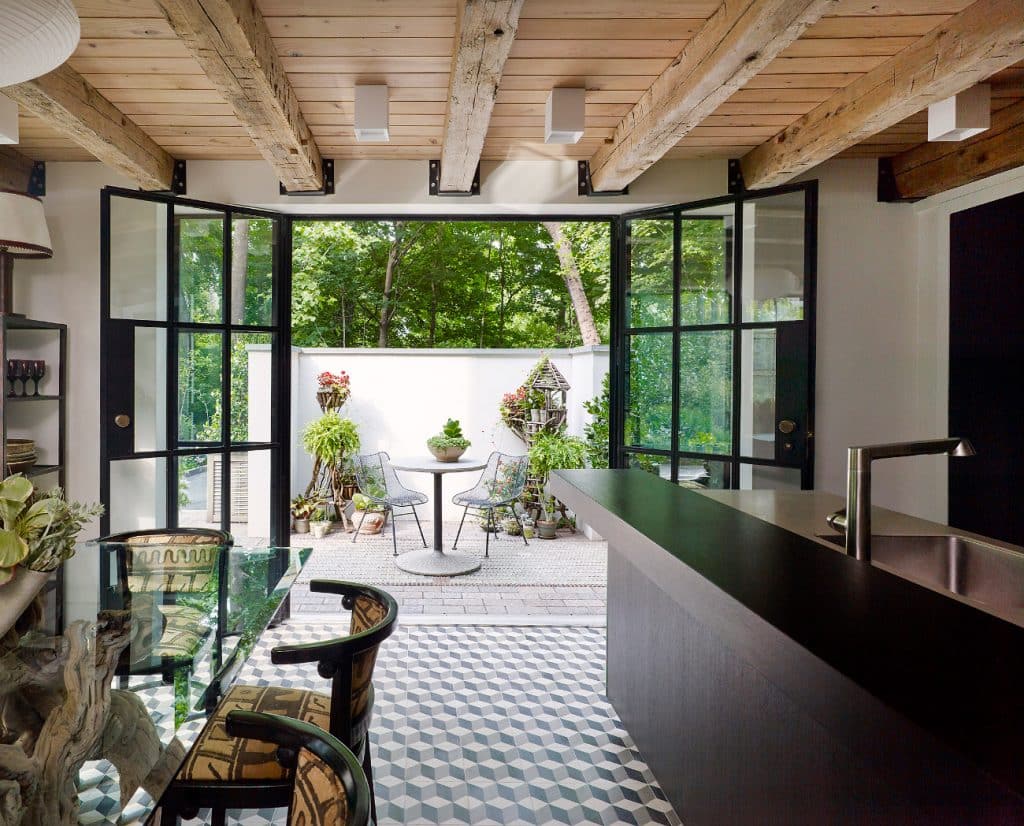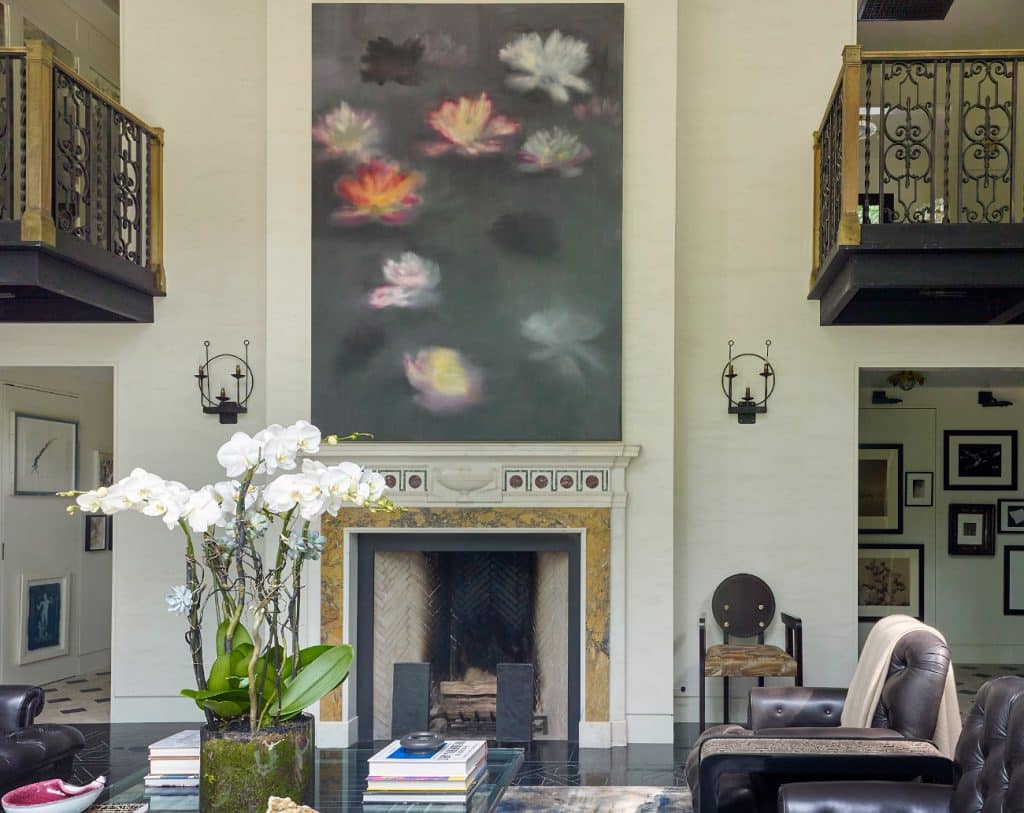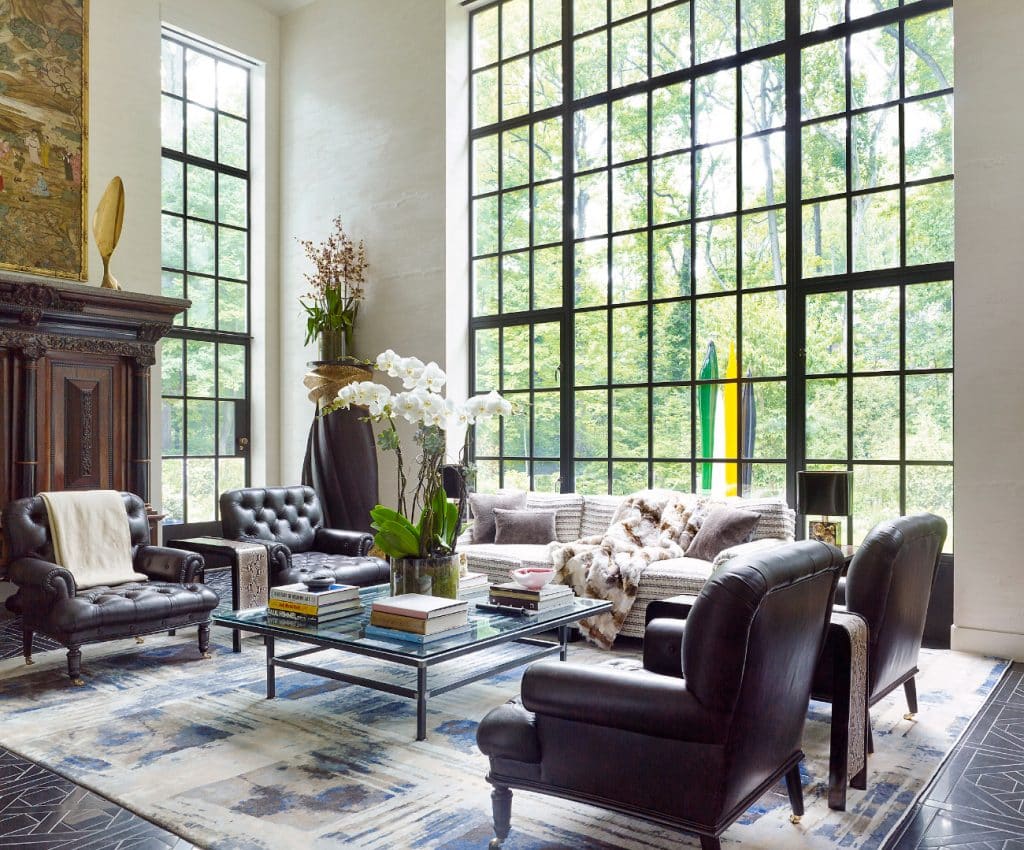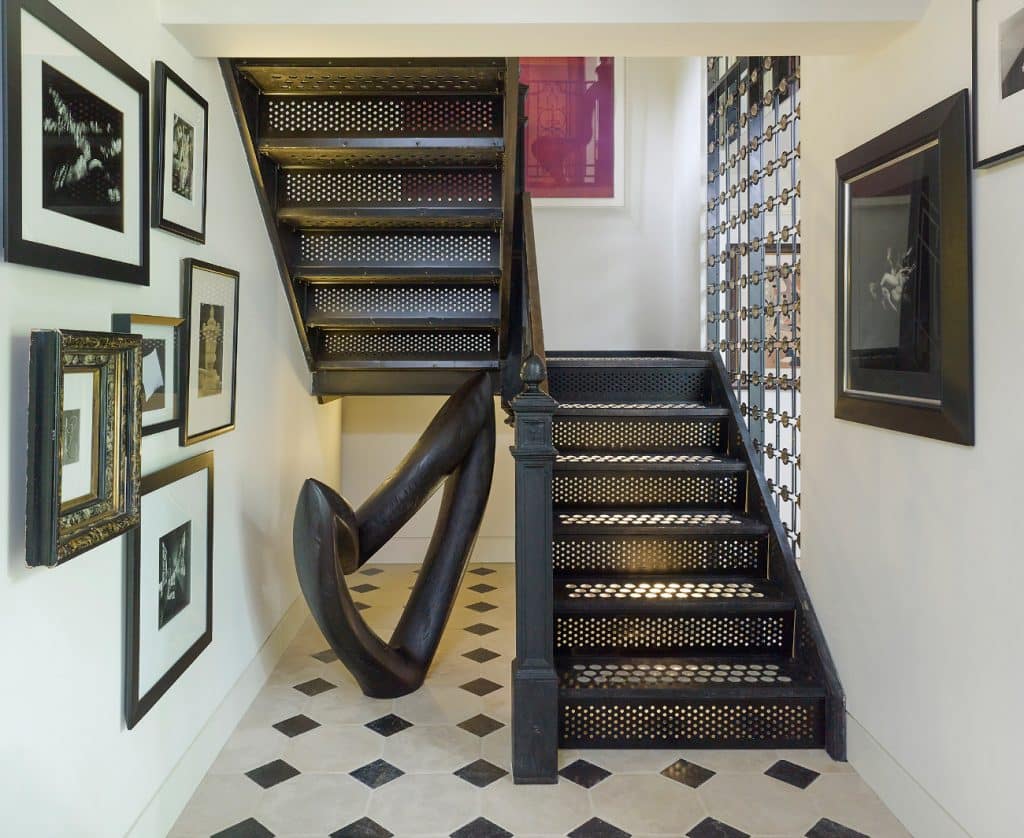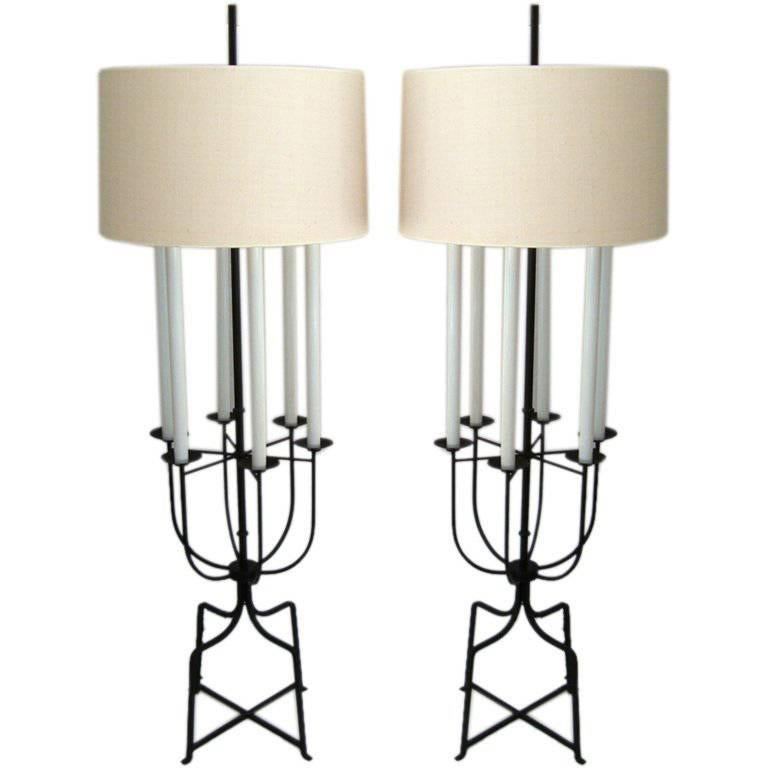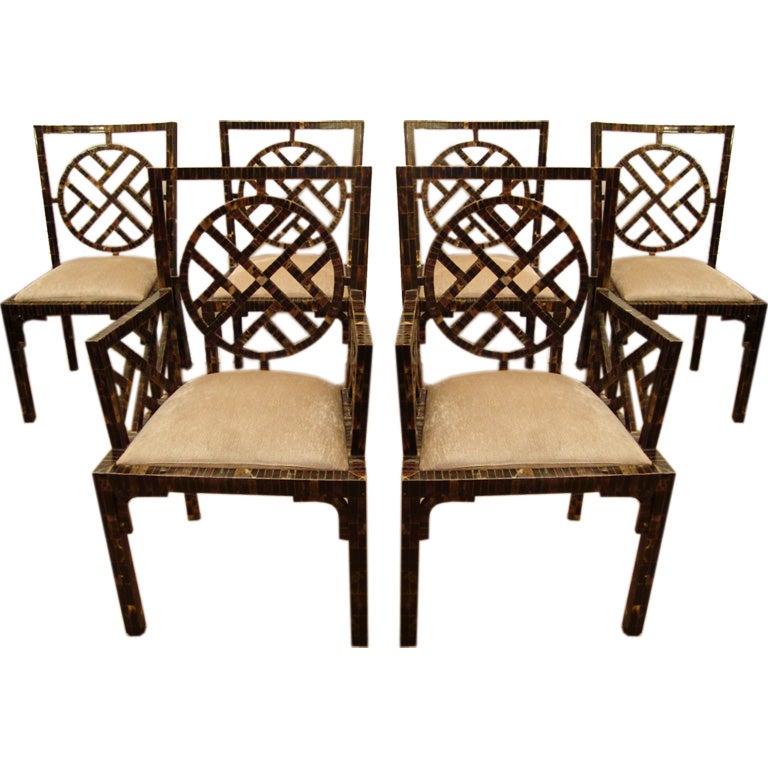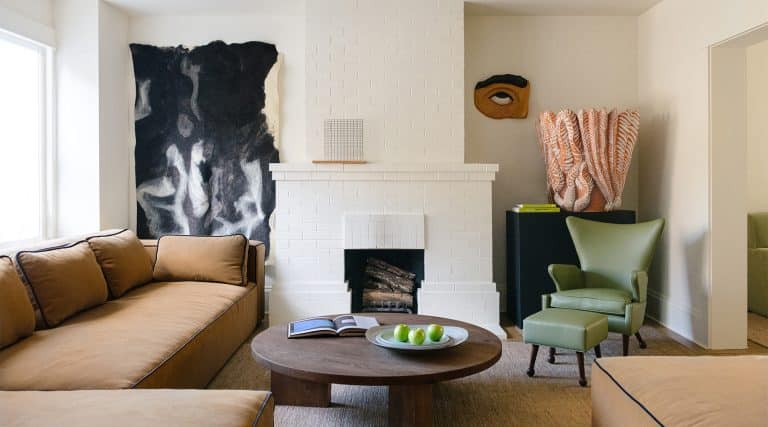April 19, 2020Glamour takes many forms in interior design. There’s the glamour of sumptuous fabrics, rare antiques, shapely unique objects, radiant artworks, even a pared-down-to-the-bones room when done just right. In various projects, Ernest de la Torre expresses his particular vision of glamour in all of the above, but with a balanced approach that gives his rooms a singularly modern, eminently livable, entirely calm look. And what could be more desirable in today’s anxious, uncertain world? Whether creating a sophisticated Manhattan apartment, an antiques-filled Palm Beach home or his own supremely comfortable weekend house in Sneden’s Landing, New York — where the designer and his family currently reside full-time, amid an imaginative amalgam of furnishings and objects, while they wait out the coronavirus crisis — de la Torre adheres to what he describes as “a masculine, tailored aesthetic. I very much enjoy the merits of mixing periods.”
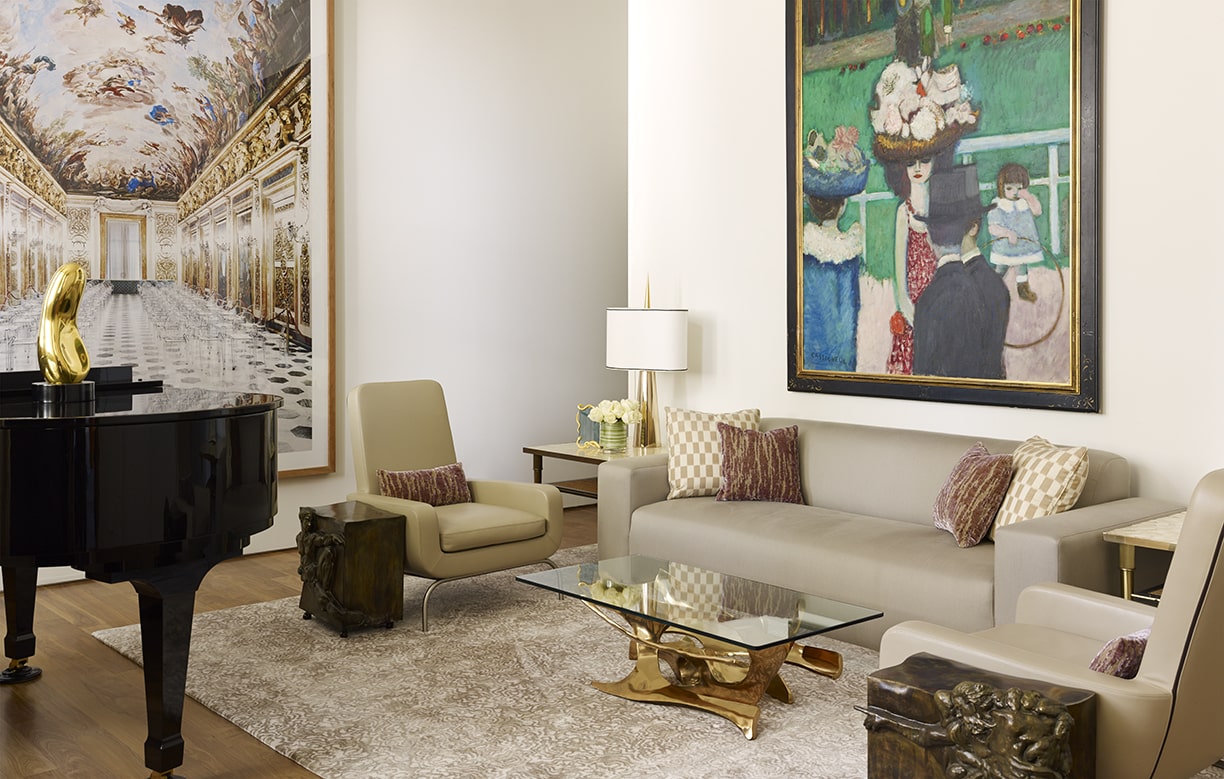
Ernest de la Torre turned a Philadelphia townhouse into a celebration of art. The living room displays works by Candida Hofer, behind the piano, and Jean Paul Cassigneul, above the B&B Italia sofa. The Philip and Kelvin LaVerne end tables beside the Minotti armchairs are from Lobel Modern, while the cocktail table is by Fred Brouard. Top: In the home’s entry, photographs by Elger Esser hang over leather benches of de la Torre’s own design, and a Jeff Zimmerman chandelier from R & Company illuminates a 1970s Marie-Claude de Fouquières table from Donzella Ltd. All photos by Peter Murdock
De la Torre always had an artistic spirit: He remembers as a child wanting to decorate every room in his parents’ house with a Christmas tree during the holidays and riding his bike around his neighborhood in the tony Chicago suburb of Lake Forest to take photographs of the David Adler mansions’ notable doors. But his path to interior design took many detours. On the advice of his physician father, de la Torre studied economics rather than art history at Marquette University and then went to work for IBM in Chicago. He didn’t neglect his artistic side entirely, however. While employed at IBM, he started renovating homes as a side business, first his own house, which he flipped, and then a series of apartments that required as much demolition and wall painting as they did decoration work. After five successful years doing that — and at a point when, he recalls, “my coworkers started asking me more questions about design than they did about computers” — de la Torre went all in on interior design.
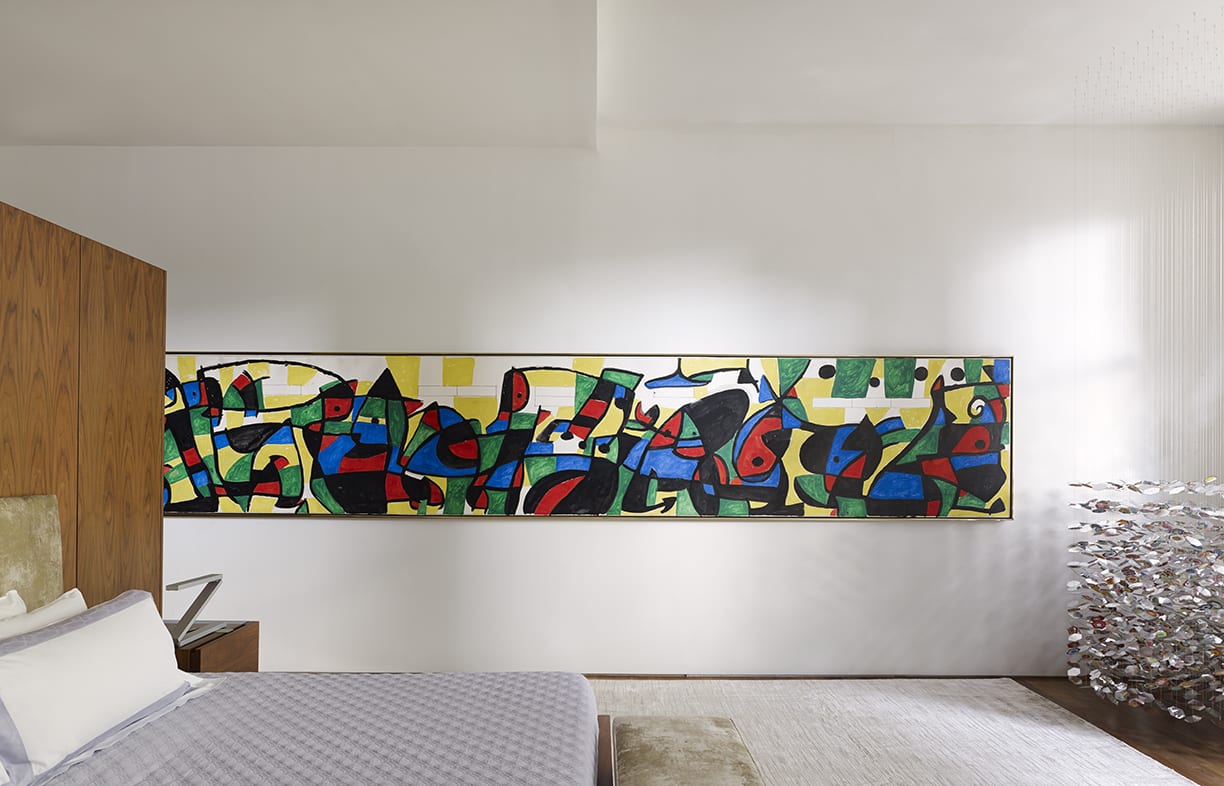
In a bedroom, a painting by Joan Miró enjoys pride of place near a sculpture by Pae White. The rug is from Joseph Carini Carpets, and the Marc Bankowsky benchat the foot of the bed is from Maison Gerard.
The offer of a position as a junior designer in Peter Marino’s architecture firm brought him to New York, and in Marino’s studio, he learned to appreciate the importance of surfaces and texture. He also realized that, without any formal design training, he needed an education in the decorative arts; he went on to earn a master’s degree in fine and decorative art and design from Sotheby’s Institute, in London, in the late ’90s. Another invaluable lesson gleaned from his time with Marino was how to work with clients of extreme wealth. “They are more demanding and want something unique,” says de la Torre. “They’re also very appreciative of your making a positive impact on their lives. I learned how to understand their unspoken needs and desires, and its brought great loyalty.”
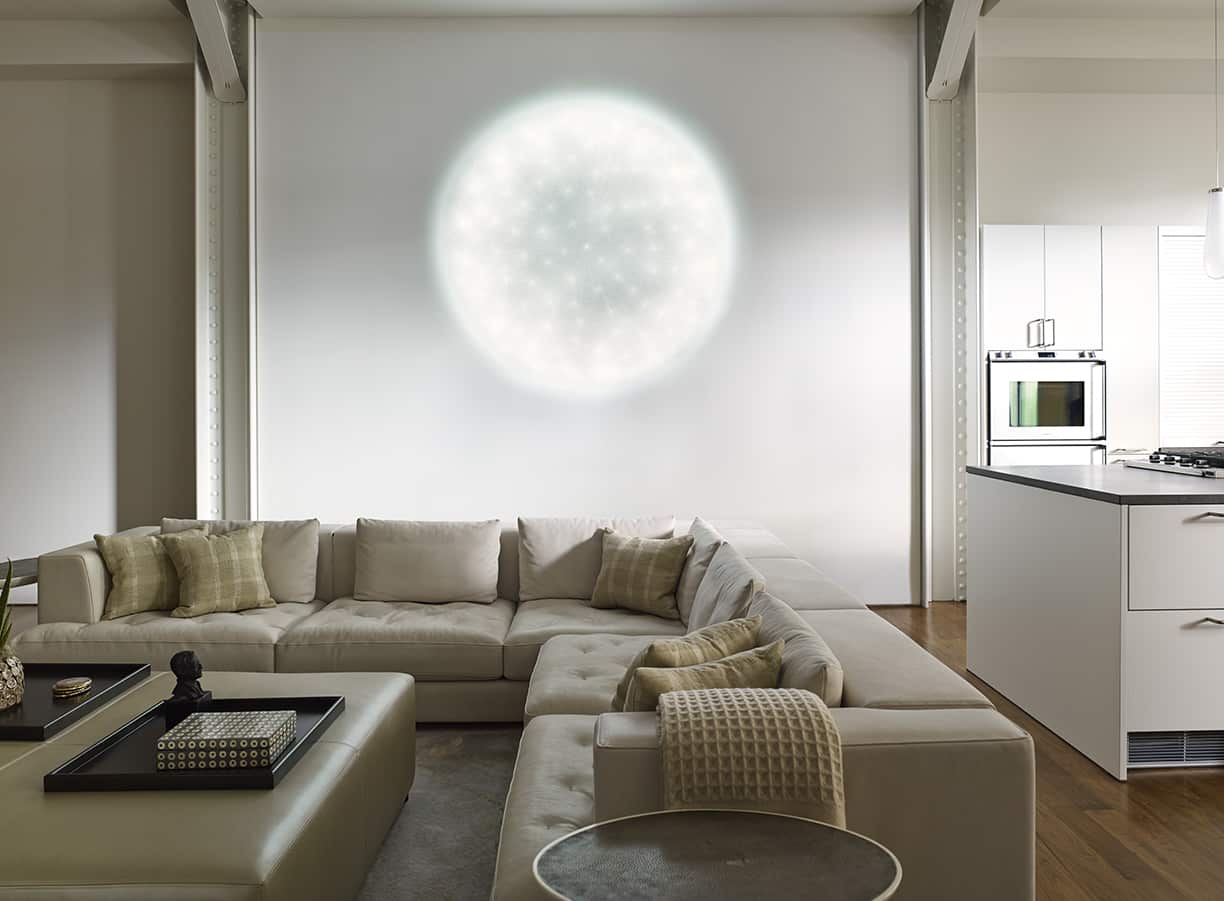
In a seating area adjacent to the kitchen, side tables from Maison Gerard join a sofa and ottoman from de Sede atop a rug from Fort Street Studios. The projection is by artist John Carpenter. “It reacts to you and your movements,” explains de la Torre. “Here, it’s a dandelion that you can break apart by blowing on the wall.”
“I had done a pretty wild foyer in gold and blue at the homeowners’ beach house, and they loved it — I like an entry to be impactful. I’m not shy about it.”
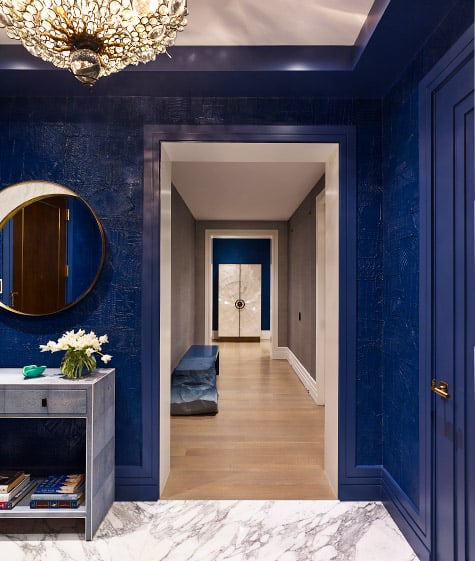
The entry of an apartment in a former fur-coat factory in New York City’s Flatiron district features a navy brutalist-patterned wallpaper, an alabaster-and-brass mirror from Galerie Glustin and a beaded-glass chandelier by Mark Brazier-Jones.
Today, working with a staff of five in a loft studio in a converted warehouse in Manhattan’s West Chelsea, de la Torre crafts strikingly decorated homes for just this sort of clientele. For a fashionable young couple with a three-bedroom apartment in a converted Fifth Avenue fur-coat factory in Manhattan’s Flatiron district, for example, de la Torre conceived a dazzling opening statement in the foyer. He lined the walls in a navy brutalist-patterned wallpaper and decorated the space with just a few jewel-like pieces, including an alabaster-and-brass mirror from Galerie Glustin and a beaded-glass chandelier by Mark Brazier-Jones. “I had done a pretty wild foyer in gold and blue at the homeowners’ beach house, and they loved it,” de la Torre says. “I like an entry to be impactful. I’m not shy about it.”
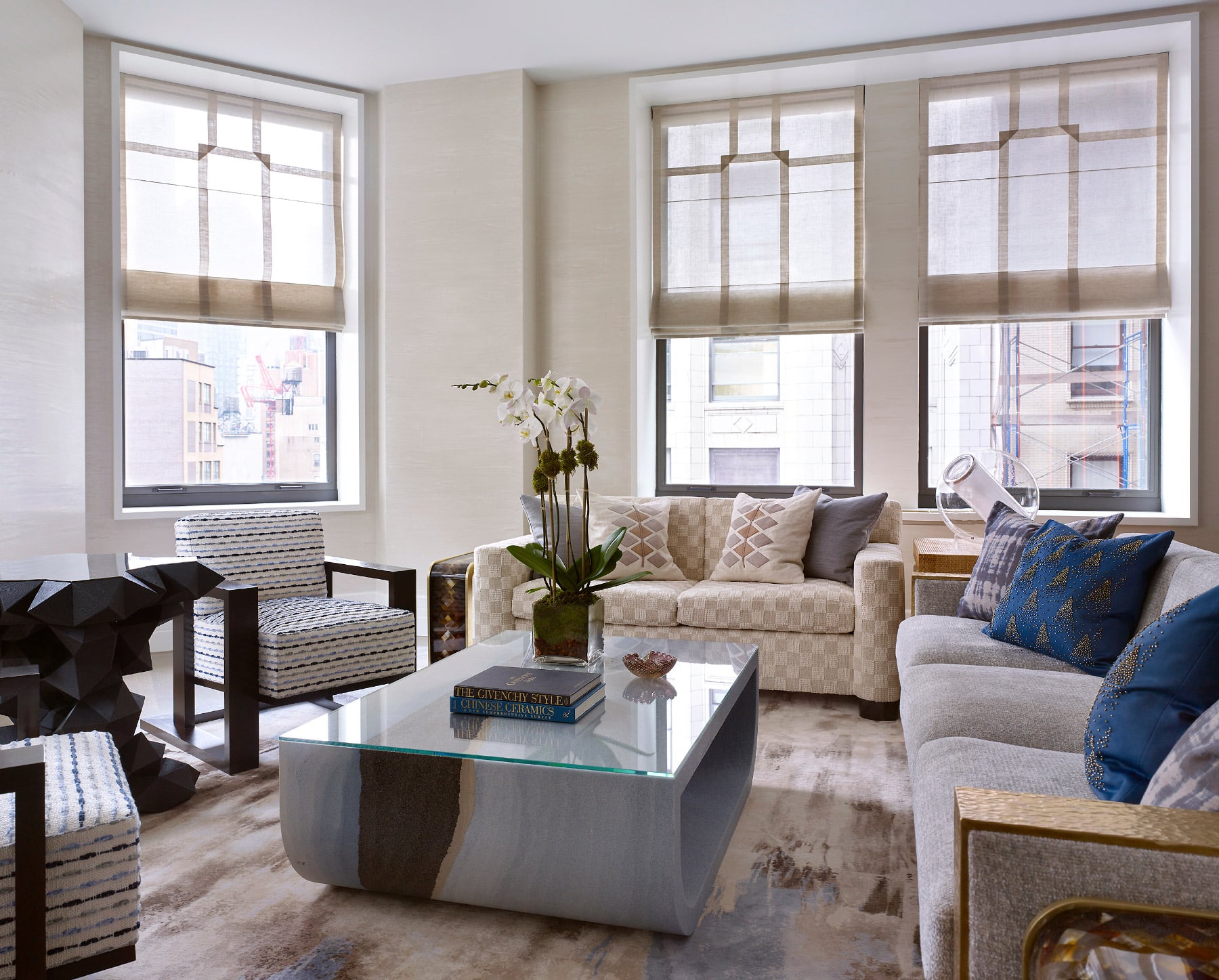
De la Torre paired upholstered pieces designed by his studio with a cocktail table crafted of hand-dyed sand by Fernando Mastrangelo in the living area.
The watery shades of a Fort Street Studio rug, in a pattern resembling brushstrokes, inspired the palette of the living and dining area, which contains a striking ombré cocktail table crafted of hand-dyed sand by Fernando Mastrangelo. Also featured is a bronze-framed crushed-glass dining table of de la Torre’s own design, which he paired with cerused-oak Holly Hunt chairs neatly tailored in navy bouclé. He lit the open space with faceted alabaster pendant lights by Hervé Van der Straeten, one of his favorite designers. “He’s going to be the Émile-Jacques Ruhlmann of the future, in terms of the collectibility of his pieces,” de la Torre predicts.
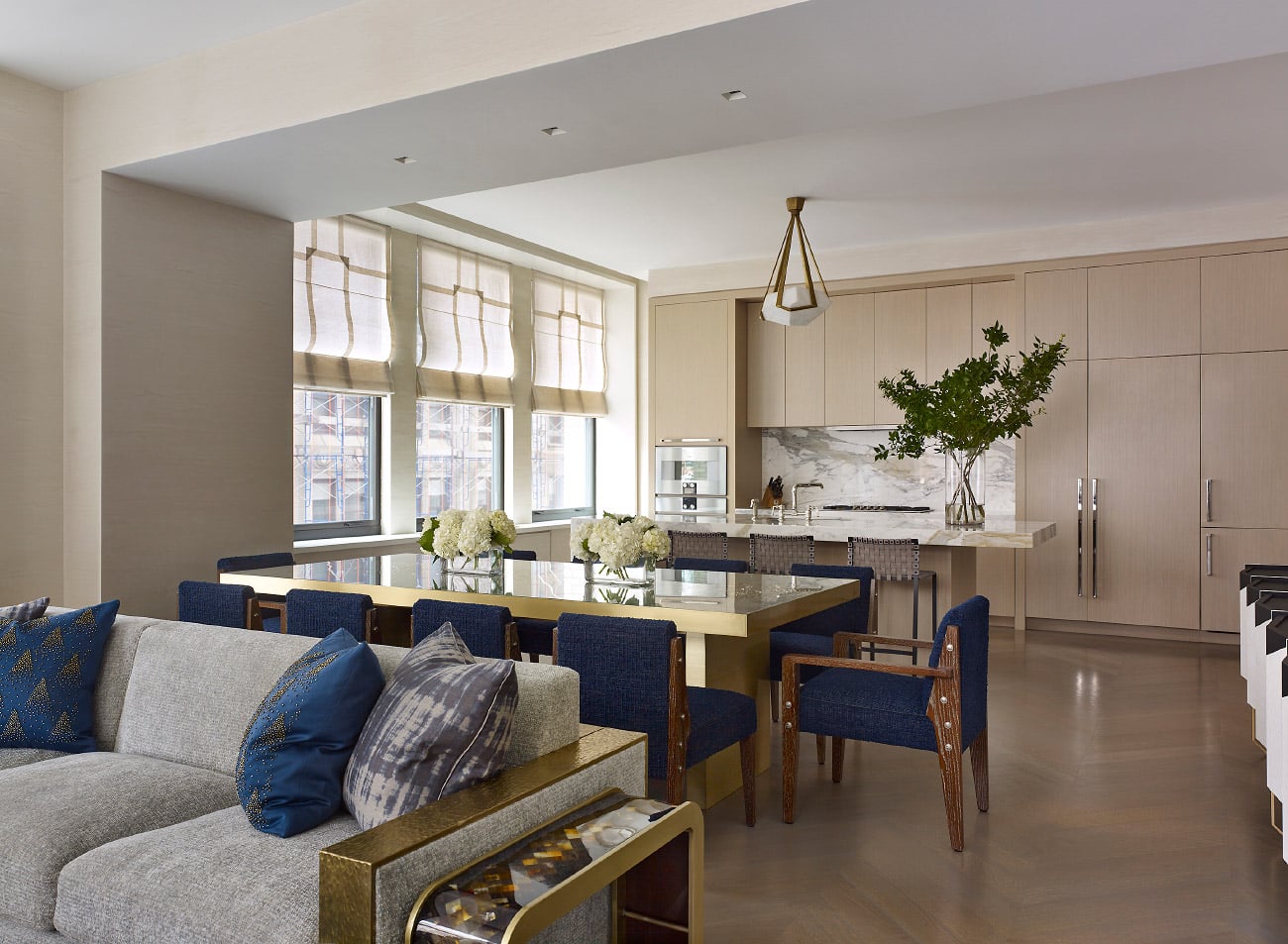
The living area opens to the dining space and kitchen beyond. Cerused-oak Holly Hunt chairs surround a bronze-framed crushed-glass table of de la Torre’s own design, all illuminated by a faceted alabaster pendant light by Hervé Van der Straeten.
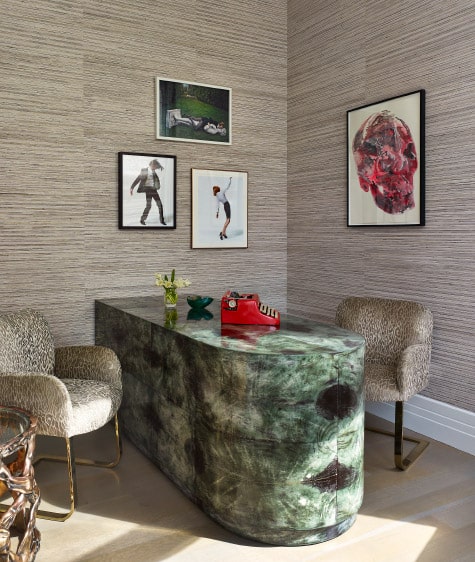
Milo Baughman chairs from Maison Gerard flank a desk by de la Torre in the office. The skull artwork on the right is by Tony Oursler.
He took a completely different approach with the decor of a townhouse pied-à-terre in Philadelphia. There, he kept the palette hushed and the furnishings relatively minimal, the better to accentuate vibrant artworks — by Joan Miró, Candida Hofer and Pae White, among others — that he helped the clients select. “It’s very clean, it doesn’t feel fussy,” says de la Torre. Still, there are moments of exuberant panache. The entrance walls get their shimmer from hand-applied resin overlaid with white-gold leaf in a geometric pattern de la Torre discovered in an Art Deco reference book. Elongated leather-clad benches of his own design flank a rare resin table by Marie-Claude de Fouquières from the 1970s that sits beneath a hand-blown-glass chandelier by Jeff Zimmerman. In the living room, ornately carved vintage side tables — glorious examples of the work of father-son duo Philip and Kelvin LaVerne — are paired with a shapely brass cocktail table by artist Fred Brouard.
De la Torre’s own country house — which he shares with his husband, account executive Kris Haberman, and their four-year-old son, Parker — demonstrates his fearlessness as a renovator and his eclectic taste as a collector. The backsplit ranch house, composed of one main floor in the front and two floors at the rear, was built into the side of a ravine in 1957, and the moment de la Torre toured it, he started fantasizing about reconfiguring the interiors to suit a modern family. He removed the upper floor at the back to create a spacious double-height living room, added skylights to brighten the interiors and installed a chic industrial staircase made of steel-and-glass subway grates imported from London. “It’s not the most toddler friendly,” he admits with a laugh.
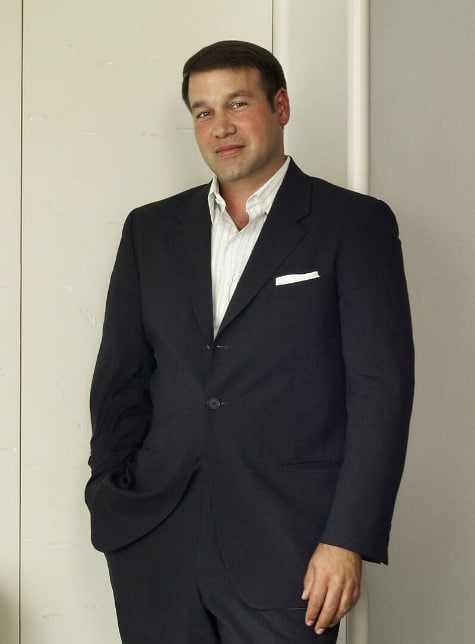
Affluent clients “are more demanding and want something unique,” says de la Torre, continuing, “They’re also very appreciative of your making a positive impact on their lives.”
As for the furnishings, minimalist they’re not. Recalling the Adler-designed mansions of his youth, with their profusion of 18th- and 19th-century European elements — from doors and archways to full English libraries — de la Torre assembled a dizzying mix of diverse pieces that nevertheless manage to play well together. “I had all these ideas in my head and finally a place to try them,” de la Torre explains. In the foyer, he paired parchment consoles that he purchased at auction with an antique bronze chair by Armand-Albert Rateau. The living room, whose walls are coated in a waxed plaster that gives warmth to the tall angular space, has a sense of grandeur, thanks to newly installed double-height steel casement windows that look out on a forest. A pair of antique cast-iron balconies flank a Georgian fireplace above which hangs a luminous painting of lily pads by Ross Bleckner, while nearby, a steel cocktail table sculpture by artist Sol LeWitt and purchased from Maison Gerard joins joins a Fort Street Studios silk rug. Illuminating all is a cocoon-shaped bronze pendant light by Van der Straeten, also from Maison Gerard.
Woodland accents ground the house. For example, a tree’s enormous root structure — which looks as if it had emerged from the ravine outside but was actually bought farther upstate — has been repurposed as a table in a kitchen with a ceiling of 19th-century beams.
Since he and his family moved there to live full-time, de la Torre has done almost nothing to change the house’s artfully decorated interiors. That said, the coronavirus lockdown has required a few adjustments. He and his husband have found ways to carve out spaces so they can both work from home with some privacy. And for respite from work, they are taking long walks in the 600-acre forest preserve that adjoins the property. They’ve also made one new addition: “a Peloton stationary bike to replace the need for a gym,” de la Torre says. “The hardest thing is to juggle work, crisis planning and daycare, but we are figuring it out. I’m very much appreciating our beautiful home at this time.”
